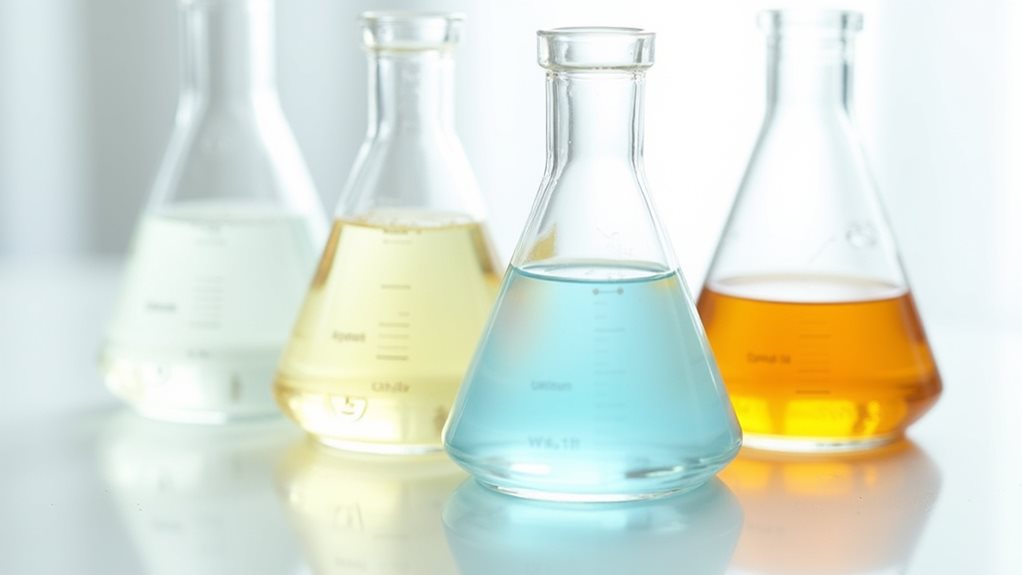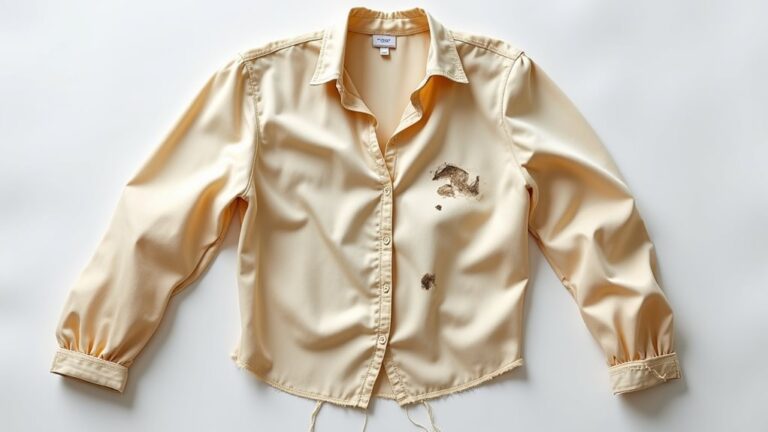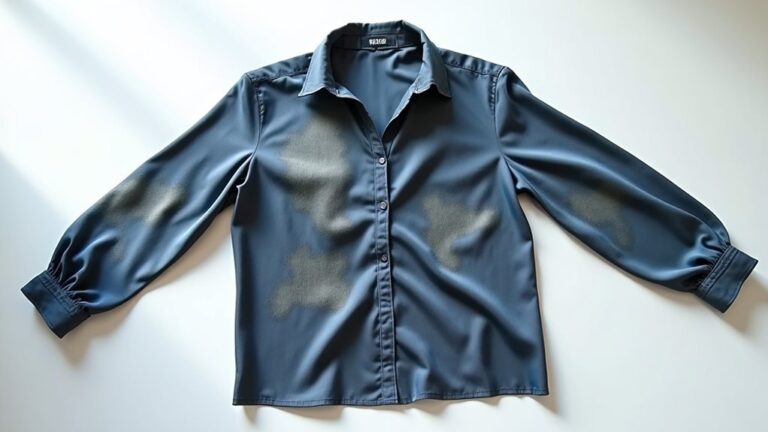Yes, dry cleaning absolutely cleans your clothes – it’s more than merely freshening! Professional cleaners use specialized chemical solvents instead of water to dissolve dirt, oils, and stubborn stains that regular washing can’t handle. I learned this the hard way when I tried washing a silk blouse at home and watched it shrink into doll clothes 😅. The low-temperature process protects delicate fabrics while thoroughly removing grime, and there’s much more to discover about this fascinating cleaning method.
What Is Dry Cleaning and How Does It Work?
When I first encountered dry cleaning as a college student with a wrinkled interview suit and zero clue about fabric care, I honestly thought the name was misleading—how could anything get clean without water? 🤔
The mystery of waterless cleaning baffled my college brain—how do clothes get clean without getting wet?
What I discovered, though, is that dry cleaning represents one of those brilliant human innovations where we’ve figured out how to solve problems by thinking completely outside the box, using chemical solvents instead of water to lift away dirt, oils, and stubborn stains that would otherwise ruin delicate fabrics like silk, wool, or those fancy structured blazers that seem to fall apart if you even look at them wrong.
The dry cleaning process works through a surprisingly elegant dance between chemistry and machinery, where your garments tumble gently in a specialized cleaning machine filled with solvent that dissolves stains without the harsh agitation of traditional washing.
Professional cleaners tag each piece for tracking, inspect for specific stains requiring pre-treatment, then run everything through cycles that operate at surprisingly low temperatures—around 86°F—to protect fabric integrity.
Most dry cleaning operations rely on perchlorethylene or other specialized solvents that effectively dissolve oils and grease while preserving the structural integrity of delicate garments.
After the chemical solvent does its magic, a final inspection guarantees everything meets the dry cleaning industry’s standards, with many facilities now embracing environmentally friendly alternatives to traditional solvents.
The Step-by-Step Dry Cleaning Process

Behind all that chemical magic I just described lies a surprisingly methodical process that, frankly, reminds me of watching my grandmother prepare Sunday dinner—everything has its proper order, timing matters more than you’d think, and shortcuts usually lead to disappointing results.
Here’s how professionals handle your delicate fabrics:
- Inspection and tagging – Each garment gets a unique identifier and thorough stain assessment
- Pre-spotting – Targeted treatment of stubborn stains before the main cleaning cycle
- Machine cleaning – Your garments swim in non-water-based solvents while gentle agitation lifts dirt
- Post-spotting and finishing process – Final stain checks followed by steaming and pressing
This systematic approach guarantees your dry cleaning machine works efficiently, your stains disappear completely, and your garments emerge looking pristine and professionally finished. The entire process concludes with a quality control inspection where professionals examine each garment before packaging to ensure chemical solvents like perchloroethylene have effectively removed all dirt and oils without damaging the fabric.
Types of Solvents Used in Dry Cleaning

The chemistry behind dry cleaning reads like a fascinating evolution story, where each solvent represents another chapter in our ongoing quest to balance cleaning power with human safety and environmental responsibility.
You’ll find perchloroethylene leading the charge since the 1930s, delivering reliable cleaning properties that’ve made it the industry standard. However, concerns about carcinogenic effects have sparked innovation in alternative solvents.
High-flash hydrocarbons offer safer cleaning without the toxicity worries, while liquid carbon dioxide emerges as an eco-friendly, nonflammable champion that’s completely reusable.
Silicone-based solvents provide gentler treatment for delicate fabrics, though they’re still under scrutiny for potential health impacts.
Petroleum spirits and Stoddard solvent have also served as hydrocarbon-based alternatives in dry cleaning operations, though their effectiveness varies compared to traditional solvents.
Understanding these dry cleaning options helps you make informed choices about your garment care.
When Your Clothes Need Professional Dry Cleaning

Professional cleaning methods prevent damage while preserving your clothing’s structure and appearance for years to come. Dry cleaning uses chemical solvents instead of water to safely remove dirt and stains while preserving the fabric’s integrity and preventing the shrinkage, color bleeding, or texture changes that can occur with traditional washing methods.
Getting the Best Results From Your Dry Cleaner

While finding a good dry cleaner feels like discovering a hidden gem in your neighborhood, getting exceptional results requires a partnership where you’re just as invested as they are.
Start by checking each care label before dropping off your items, then honestly communicate about stains—trust me, your cleaner appreciates knowing that mysterious spot came from last week’s pasta disaster 🍝.
Don’t attempt DIY fixes on delicate fabrics; professional dry cleaning solvents work far better than whatever’s under your kitchen sink.
When you pick up your clean fabrics, make the inspection step your habit—proper results from your dry cleaner shouldn’t include lingering solvent odors or missed spots during the dry cleaning process.
Remember that chemical solvents like perchloroethylene are specifically designed to dissolve oil-based stains that water simply cannot handle, making professional treatment essential for challenging spots.




